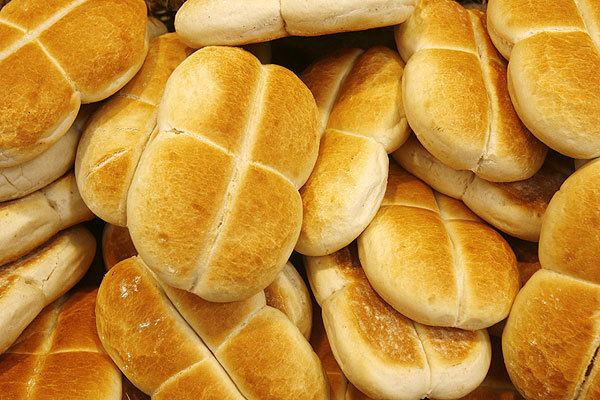Type Wheat Bread | ||
 | ||
Alternative names Pan de batalla (staple bread) in Bolivia, Pan francés (French bread) and pan batido (“whipped bread”) in Chile Created by European immigrants in South America Main ingredients Flour, salt, water, leavening agent Food energy
(per serving) 267 calories for 100 grms. kcal Similar Bread, Hallulla, Pão de queijo, Requeijão, Pain de mie | ||
Pan marraqueta recetasparati
The marraqueta (also called pan de batalla ("staple bread") in Bolivia, pan francés (“French bread”) in the south of Chile and pan batido (“whipped bread”) in the Valparaíso Region), is a crispy bread made with flour, salt, water and yeast.
Contents
- Pan marraqueta recetasparati
- Pan marraqueta pan chileno silvana cocina
- History of Bolivian Marraqueta
- History of Chilean Marraqueta
- Ingredients and preparation
- References

This wheat bread has a crunchy texture, and is very popular in Chile, Brazil, the Andean region of Bolivia and Peru but can also be found in Argentina and Uruguay.

The Bolivian marraqueta is a 60-75 g bread, sold per unit and consumed mostly in the metropolitan area of La Paz and El Alto. It is prepared in common ovens between midnight and dawn to be sold fresh and crunchy by vendors in the morning.

The Chilean marraqueta is, strictly speaking, a se-tenant pair of small rolls, baked with another pair attached, comprising four rolls in total; some confusion can be caused when ordering one marraqueta, as this may be interpreted as either two or four rolls.

Pan marraqueta pan chileno silvana cocina
History of Bolivian Marraqueta
The recipe of this crunchy bread arrived in La Paz in 1908 in the hands of the greek immigrant Michel Jorge Callispieris, from Chios island. Bread in both locations share indeed the same characteristics: crunchiness and slightly salty flavor.
The marraqueta of La Paz was declarared cultural patrimony in 2006.
History of Chilean Marraqueta
Many historians agree that the marraqueta originated in Valparaíso, Chile in the late 19th and early 20th centuries, when major Chilean ports such as Valparaíso and Talcahuano received thousands of European immigrants. The story goes the bread was invented by two French baker brothers in Valparaíso whose last name was Marraquette, and the bread went on to become very popular among Chileans in a very short time. This story would explain both the marraqueta and pan francés names. In Valparaíso itself, somewhat confusingly, marraqueta means the four small rolls while half of this is called pan batido, the use of which is a shibboleth of the Port of Valparaíso (but is ignored by national supermarket chains). There is no clear agreement on what is considered one unit of marraqueta and while some bakers claim is the four pieces of bread, some others claim that a unit is only half (so they say that the four pieces are two marraquetas).
An alternative theory of the bread’s origin was proposed by French naturalist and botanist Claude Gay, who suggested that marraqueta was first eaten in Chile in the 18th century.
Currently marraqueta is the most widely consumed bread in Chile and is used as toast, in sandwiches and as a binder for certain recipes such as pastel de carne (meatloaf). It is widely considered the quintessential Chilean staple food.
Ingredients and preparation
Marraqueta is made from flour, water, yeast and salt. It does not contain fat and the proofing process takes longer than other breads. The unusual form of the four buns allows it to be divided very easily.
